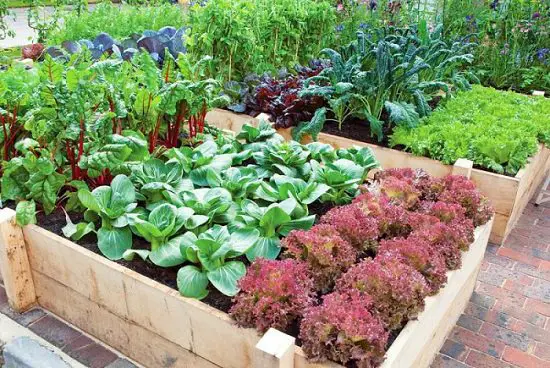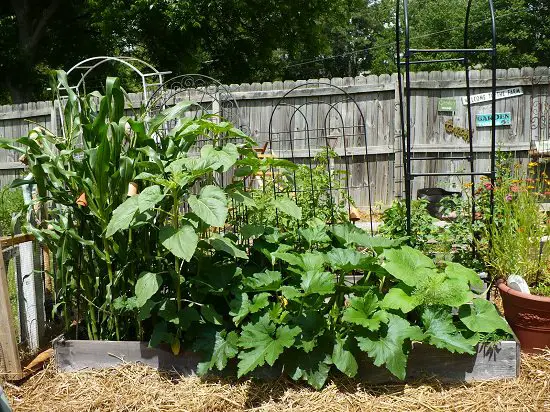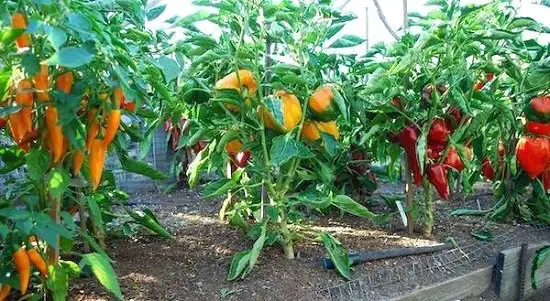See these effective vegetable gardening tips for beginners. The secret to productive garden lies in the outset of several activities. The following 10 tips will help you to create a more productive and less maintenance vegetable garden.
1. Observe
Before you begin gardening, you must observe the space you are about to use, perfectly. How big or small it is? Which way the wind blows and how windy it is? Is it sloppy or shady? Take a look at every aspect of the selected area neatly and consider how you can use it. How many hours of sun it gets? Which spots are the longest sunny? Where is partial shade? How you will water the garden? How you can use rainwater? What is the pH level of soil and other nutrients in it? How you can use the space more effectively and what is the average temperature and in which zone your area falls into?
Jot down these questions and try to find out all the answers. Once you ferret out the details, the chances of your success as a gardener will increase.
2. Prepare your soil
Work on your soil. Healthy, organic and nutrient-rich soil is the basis of a stable and productive vegetable garden. This will enable the development of strong root system that is less prone to diseases and supply plants very valuable micro and macro elements and water. Being able to draw nutrients and water from the depths of soil, the plants will grow better above the ground become more productive.
The quickest way to get a few feet thick layer of fertile soil is to make raised beds. A raised bed should be rich in organic matter like aged manure, compost or vermicompost, and perlite or sand if soil is not well draining. Investing in the construction of raised bed also has economic advantages: its shape allows the cultivation of more plants in the same space. It is estimated that raised vegetable garden yields four times more than the standard flat bed.
3. Design and Planning
Notice how the plants deploy on a spot. Analyze their needs and try to plant the plants in a way that you can utilize every inch of space. Imagine the plants like a puzzle or building blocks and take a piece of paper and a pencil to draw the plan of your garden. Consider the practical issues like which plants will be planted where? How can you arrange them to make your garden more efficient and convenient?
Many plants, such as beans, peas, pumpkin like to writhe on the ground or climb on support. Providing them with support in the form of a trellis, nets or grilles increases the area of the garden as you can grow shady vegetables and other edible plants in the shade of them.
4. Grow Vertical
Grow vertical, especially if you’re running out of space. Apart from saving space, there are many other benefits of vertical planting: less or no fungal diseases, improved air circulation means healthy and more productive plants, ease in harvesting.
5. Create a Favorable Environment
Search for the optimal combinations of plants. Try to maintain biodiversity. Grow the plants together that have similar growing requirements and are a companion to each other. To know more about companion planting, read this educative article of Cornell University.
If you are growing annuals be sure to do crop rotation or plan a new set of plants in the growing area for next season. Grow nitrogen-fixing plants such as legumes and beans combined with flowers.
Remember the value of compost and vermicompost. Build your own compost bin. This way you’ll be able to get rid of your organic waste every day and become more self-sufficient and get natural fertilizer, compost also improves the texture of the soil. Use other sources like manure, coffee grounds and wood ash to enrich your soil.
6. Grow Local
Local and native plants that are traditionally grown in your region should be your first priority as they are easiest to grow and more productive, especially for beginners. Generally, such crops are also more resistant to pests and diseases and local weather conditions. Opposite to high maintenance exotic vegetables, local vegetables are undemanding and grows in a variety of soil types.
7. Mulching
A thick layer of mulch is also necessary for your garden to help retain moisture. Mulching provides warmth on cold days and chill in the hot. It protects roots from the harsh sun and gradually decaying lowest portion of mulch enriches the soil too.
8. Watering
Watering the right way can increase the yield of plant and avoid many pests and diseases. Generally, one-inch water per week including rainfall is sufficient for most vegetables. Although, it depends more on soil type, weather and plant.
Most efficient way of irrigating plants in the garden is by using soaker hoses and drip lines as they deliver the water right where it is needed and allows time for roots to absorb water. If in case you’re growing a container vegetable garden, read– How to water container plants.
9. Use of Pesticides
Pests and diseases are the most heartbreaking and common thing happen to any gardener. The easiest way to kill them is to use chemical pesticides and insecticides, but do you really want to use them?
Don’t use chemical pesticides until possible, they are harmful and also kill the beneficial insects and pollinators. Go organic, experiment with natural remedies to see what is effective. Turmeric, garlic, chilies, onion, insecticidal soaps, neem and horticulture oils are useful and repel the pests. Remember, you need to be patient and consistent with natural pesticides and at last, if you’re using chemical pesticides, use them when pollinators are inactive in the evening.
10. Don’t Overfertilize
Beginners often do this mistake. They believe the more fertilizer they will feed the better and healthier their plants will become. But overfertilization can burn the roots of your plants, it can imbalance the soil and even kill earthworms and other beneficial soil insects.
It is best to get your soil tested to find out which nutrients your soil needs and fulfill them accordingly. Also, mix as much compost and other organic matter as possible.






I would like to know how to plant veges in a limited space. I appreciate you sharing some tips on how best to do it.
Hi Leneth, please search our website, you’ll get everything you like to know about limited space gardening.
I live at the edge of the desert. Our elevation is about 2500 to 300 feet and our average daytime temps during the Summer range from 90 to 105 degrees. Every book I see shows Southwestern Utah to be in a zone that does not grow half of the vegetables we do grow every year. Is there such a thing as a half zone? If not which zone would you suggest for St. George, Utah? Also, in this zone I water everyday for five minutes because it evaporates quickly. Am I wrong?
Stan
You should mulch to minimize evaporation. Also, water longer with soaker hoses so the water penetrates deeply into the soil. This way your water will not evaporate as quickly and your root systems will develop deeper and make your plants more hearty. Mulch is your friend!
Probably late to answer as a native of southern utah I grew up here gardening 8b is our zone. Mulch is your best friend, and longer water times less often is the best choice. Happy gardening.
Stan – Gardening zones are useful for shrubs and such that will last for years, but veggies are annuals that only live for a season. Ignore the map and listen to your plants. You need to water longer so the moisture penetrates farther into the soil. Deep water encourages deep roots, which don’t dry out as fast as shallow roots, and you won’t need to water as often (except maybe July – August). Experiment with shade cloth. I’m in southern California with hot, dry summers and many of our sun-loving veggies don’t love our afternoon sun, so we give them shade for the hottest times of the day. Even our tomatoes have light shade after 1:00 pm.
BGW – sorry I stole your thread! :0)
Do not fertilize at all! Or choose the all natural fertilizer. So many out there that are really effective to keep the bugs off. By the way, that’s a beautiful garden. Love it!
My brother recommended I may like this website.
He used to be entirely right. This put up actually made my day.
You cann’t believe simply how a lot time I had spent for this info!
Thanks!
I had a problem with caterpillars last year. How can you rid your garden of them? Also, I see a mole has found his way to my side of town, how do you get them to not come back
What do you think about self-watering containers?
You have shared good information and I appreciate it. I really love gardening, but I only grow flowering plants in our small yard. They are all in pots as our yard is all pavement/concrete. I’d like to plant veggies in boxes. Is it possible? What do you suggest is the best and easiest to grow? I hope you can give me tips on caring for them as well. Thanks so much!
What is a good mulch to put on an organic vegetable garden?
I’m quite the beginner when it comes to vegetable gardening so this is sure to come in handy. Gotta bookmark it and come back to this when I’ve got the time to begin! Thanks for the great tips.
Great tips for gardeners. I will check them out and apply for my own garden.